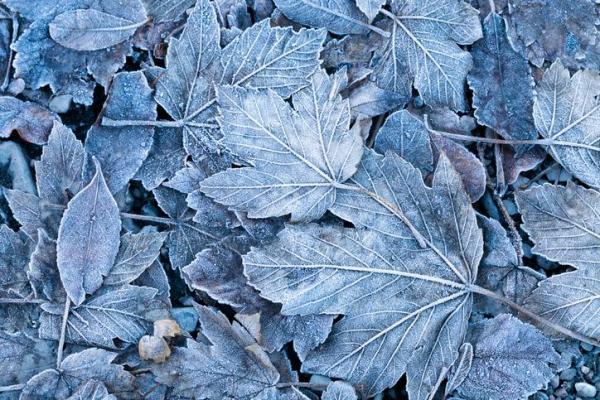
As we approach the shortest and longest days of the year, we often hear about the solstice, a term unfamiliar to many. The term came to English via Anglo-French in the 14th century. Its origins can be traced down from the Latin word solstitium, meaning “sun”, and “-stit-”, meaning “standing”. A winter solstice, also known as hibernal solstice, is when the path of the Sun reaches its furthest point. On the winter solstice, the day is shorter than any other day of the year, primarily due to the short duration of the maximum altitude of sunlight at noon.
In this oneHOWTO article, we explain what is the winter solstice and when it occurs, along with the celebrations taking place during this day and their symbolic meaning.
Difference between equinox and solstice
The seasons on Earth change because of the slight tilt of the Earth's axis in relation to its orbit around the Sun. This means that different parts of the planet receive different amounts of sunlight at different times of the year. If the Earth were not tilted, the Sun would always appear directly over the equator, the amount of light a place receives would always be the same, and there would be no seasons.
As we have already seen, the solstice refers to the time when the poles of the earth are nearest or farthest from the sun. In this regard, a year has two solstices, the winter solstice and the summer solstice. During the winter solstice, the length of the day shortens due to the reduction of daylight, followed by the longest night of the year. The summer solstice, on the other hand, is when the sun is closest to the earth. As a result, the day lengthens and the night becomes shorter. The solstices mark the beginning of winter and summer. In the Northern Hemisphere, the summer solstice occurs around June 20-21 and the winter solstice occurs around December 21-22.
There is another phenomenon that occurs twice a year that is often confused with the solstice: the equinox. You may know that the solstice and the equinox indicate the change of seasons on Earth, but do you know which is which? Are they just different names for the same thing? Actually, the solstice and the equinox are kind of opposites. At the solstice, the days are shortest and longest, while at the equinox, the days and nights are almost equal in length, marking the beginning of spring and fall. The equinox also occurs twice a year.
The equinox occurs in March around the 21st and in September around the 23rd. These are the days when the sun is exactly over the equator, so that day and night are of equal length.

When does winter start (solstice 2021)
The winter solstice occurs in the Northern Hemisphere around December 21. Only in 2011 and 2015 did it fall on December 22. In the Southern Hemisphere, however, it occurs around June 21. Only in 2012 and 2016 was it moved forward to June 20 in the last decade. Thus, the winter solstice officially marks the beginning of winter (or summer) in both hemispheres.
Meteorologists summarize the winter months as follows: In the north, it's December, January and February, while in the south it's June, July and August. One obvious reason for this is that there is a gradual drop in temperature just before the solstice.
Winter solstice rituals
The winter solstice marks the beginning of a new weather period and has always been celebrated with various rituals. In this oneHOWTO article, we examine some of these rituals:
- The Chinese were able to determine the time of the winter solstice by using sundials. These devices indicate the time of day when the sun is visible in the sky based on its apparent position. It was officially celebrated during the Han Dynasty (206 BC—220 AD) and continued until the Tang and Song Dynasties (618 AD -1279 AD).
- In Peru, the Paracas (between 800 and 100 BC) aligned several of their geoglyphs with the winter solstice. The Nazca lines (figures of animals, plants, and mythological beings engraved on the earth) are also aligned with the winter solstice. These designs were made in order to follow the path of sunlight established by the winter solstice in June, which is when the winter solstice occurs in the Southern Hemisphere.
- Norsemen also celebrated Yule during the winter solstice. This ancient festival dates back to pre-Christian Scandinavia and was a precursor to Christmas as we know it today. Even today, families gather on this day to remember and celebrate their deceased relatives and ancestors.
- In Persia (modern-day Iran), the night of December 20 was special, as families gathered at home to wait for the “longest night of the year.” As part of a vigil, candles were lit to “help the sun fight the darkness”.
- The Incas celebrated the festival of Inti Raymi, the sun god, for 15 days. Although the festival has evolved and changed over time, the winter solstice is still celebrated today with dances and performances.
- The Mayans used to celebrate the solstice through a tradition called the Hole of the Ants and the New Sun. This was the day when the sun gave way to darkness, during the “Night of the Stars” in the Mayan calendar. Descending into the ant hole (graves) represents the beginning of the journey to a new life, which is why it was celebrated on this date.
It is also worth pointing out that while the following celebrations are not about the winter solstice per se, Christianity and Judaism celebrate two important moments in their history on this date:
- Spirit of Christmas: Celebrated on December 21, the Spirit of Christmas marks the beginning of the Christian holiday of Christmas. On this holiday, God descends to earth to announce the birth of Jesus. The anniversary coincides with the winter solstice in the Northern Hemisphere.
- Hanukkah: This holiday commemorates the independence of the Jews from the Seleucid Empire by the Maccabees, as well as the cleansing of the Second Temple in Jerusalem. Hanukkah is celebrated from December 22 to 30.

Spiritual meanings of the winter solstice
The winter solstice traditionally represents the rebirth of mankind. This day is commonly associated with the “triumph of light over darkness” and the “end of the long days”. Light, which is a symbol of hope, power and divinity, is associated with this date in some religious interpretations.
For example, the Romans adapted Yule, also known as “the day the sun conquers darkness”, to the birth of Jesus Christ. Today, some neo-pagan groups still celebrate Yule as part of the winter solstice.
Many ancient cultures used the winter solstice as a reference point for the worship of their gods. For example, Mitra (Hindu god), Horus (Egyptian god), and Marduk (Mesopotamian god) were worshipped for several days beginning on the winter solstice. The rebirth of light was a common theme in these events.
Nowadays, the winter solstice is celebrated around the world to renew energy and purify the soul: Believers light candles, meditate, reflect and make wishes on this special day.
If you want to read similar articles to When Is the Winter Solstice and What Does It Mean?, we recommend you visit our Hobbies & Science category.